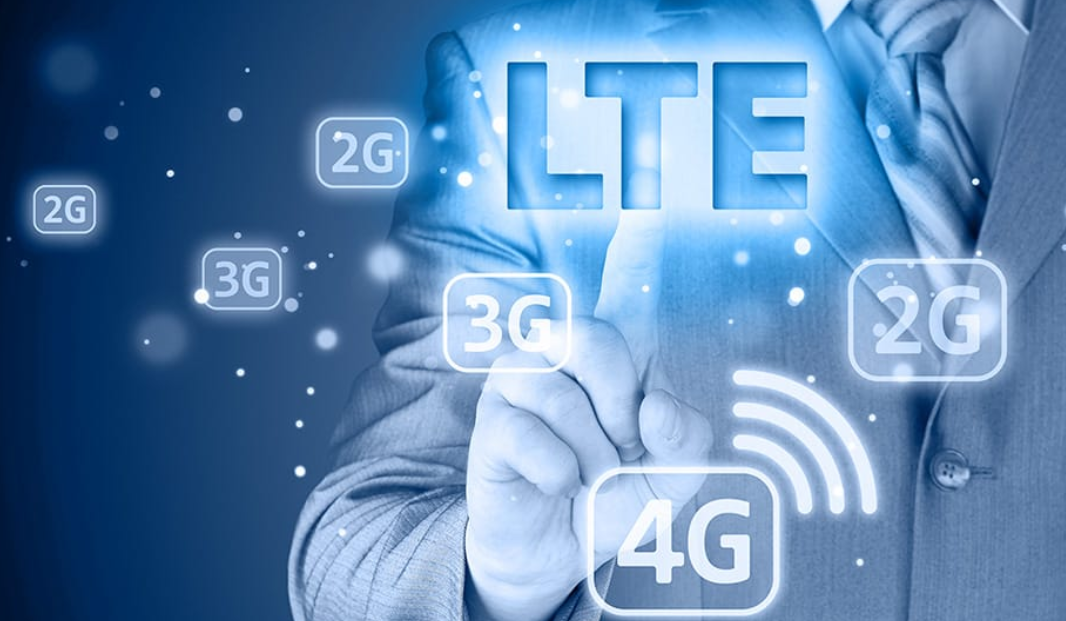
In large-scale production scenarios, numerous devices, production application systems, workers, and products are involved. A stable, high-speed, and easily manageable wireless network is an essential requirement.
Wireless communication technologies in industrial IoT can be divided into two categories: short-range communication technologies such as ZigBee, WiFi, and Bluetooth, and low-power wide-area network (LPWAN) communication technologies. LPWAN can be further divided into two types: technologies that operate in the unlicensed spectrum, such as LoRa and SigFox, and 2/3/4G cellular communication technologies supported by 3GPP in the licensed spectrum, such as EC-GSM, LTE Cat-m, and NB-IoT.
Different wireless technologies vary in terms of networking, power consumption, communication distance, and security, making them suitable for different scenarios. For example, Sub-1GHz technology is suitable for applications requiring long transmission distances, battery power, and robustness. Bluetooth is ideal for high-speed, more information transmission, and control via mobile phones. Thread, Wi-Fi, and other technologies also have their own advantages and applicable situations.
Wireless Connectivity in Industry 4.0 Application Scenarios
It is worth noting that new wireless technology standards are constantly emerging. For example, as an extension and supplement to traditional WiFi technology, Wi-Fi HaLow can provide a unique combination of security, long-distance, low-power, and highly optimized wireless connections, greatly improving the management efficiency of factory automation.
Performance Comparison of Different Wireless Technologies in Industrial IoT
Transmission Rate and Distance of Different Wireless Technologies in Industrial IoT
Reception Efficiency and Distance of Different Wireless Technologies in Industrial IoT
The most common wireless technologies in industrial IoT are listed below:
ZigBee, Bluetooth, Lora, NB-IoT, Sigfox, and the latest WiFi Halow technology.
ZigBee Technology
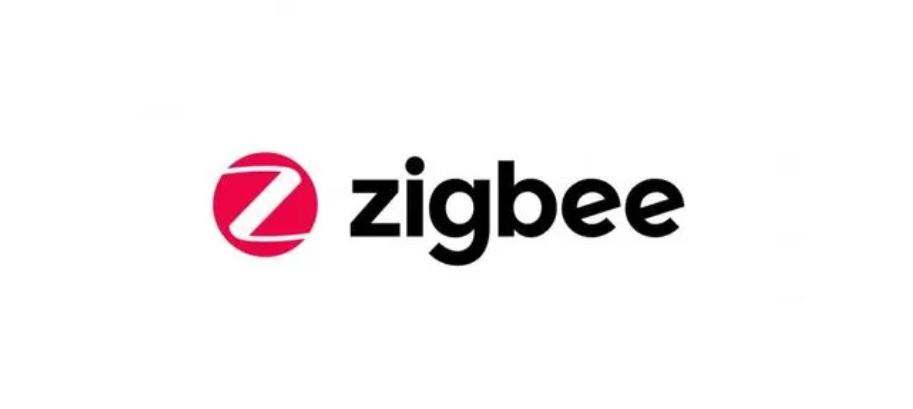
 ZigBee was officially proposed in 2003 to address the shortcomings of Bluetooth communication protocols, such as high complexity, high power consumption, short distance, and small network scale. The name is derived from bees, which use flight and “zigzag” wing vibrations to communicate the location of pollen to their peers, forming a communication network within the group.
ZigBee was officially proposed in 2003 to address the shortcomings of Bluetooth communication protocols, such as high complexity, high power consumption, short distance, and small network scale. The name is derived from bees, which use flight and “zigzag” wing vibrations to communicate the location of pollen to their peers, forming a communication network within the group.
ZigBee can operate in three frequency bands: 868MHz~868.6MHz, 902MHz~928MHz, and 2.4GHz~2.4835GHz. The last band is globally available with 16 channels and is a free, unlicensed radio frequency band. The transmission rates for the three bands are 20kbps, 40kbps, and 250kbps, respectively.
ZigBee is a low-cost, low-power, short-range wireless communication standard designed for low-speed sensor and control networks. It has the following characteristics:
Low power consumption: Due to ZigBee’s low transmission rate, the transmit power is only 1mW, and it adopts a sleep mode, making ZigBee devices very power-efficient. It is estimated that ZigBee devices can maintain a usage time of 6 months to 2 years with just two AA batteries, which is unmatched by other wireless devices.
Low cost: The initial cost of ZigBee modules is around $6, and it is estimated to drop to $1.5~$2.5 soon. Additionally, the ZigBee protocol is royalty-free.
Low complexity: The size of the ZigBee protocol is generally 4~32KB, while Bluetooth and WiFi usually exceed 100KB.
Short latency: The communication latency and the latency from sleep state activation are very short. The typical device search latency is 30ms, the sleep activation latency is 15ms, and the channel access latency for active devices is 15ms. Therefore, ZigBee technology is suitable for wireless control applications with stringent latency requirements (such as industrial control scenarios).
Large network capacity: A star-shaped ZigBee network can accommodate up to 254 slave devices and one master device. Up to 100 ZigBee networks can exist simultaneously in one area, and a network can have up to 65,000 connected nodes, allowing for flexible network composition.
Reliability: A collision avoidance strategy is adopted, reserving dedicated time slots for communication services that require fixed bandwidth, avoiding competition and conflicts in data transmission. The MAC layer uses a fully acknowledged data transmission mode, where each sent data packet must wait for an acknowledgment from the receiver. If a problem occurs during transmission, retransmission can be performed.
Security: ZigBee provides data packet integrity checks based on cyclic redundancy check (CRC), supports authentication and identification, and uses the AES-128 encryption algorithm. Each application can flexibly determine its security attributes.
Although ZigBee has advantages such as low power consumption, low cost, low rate, high capacity, and long battery life, it also has disadvantages, namely poor anti-interference ability, short communication distance, and the ZigBee protocol is not open-source.
Bluetooth Technology
Bluetooth technology originated in 1994, developed by the telecommunications giant Ericsson. It is the simplest and most convenient method for short-range wireless communication between two devices, enabling short-range data exchange between fixed devices, mobile devices, and personal area networks in buildings. Bluetooth technology is widely used in mobile devices such as mobile phones and PDAs, PCs, GPS devices, and numerous wireless peripherals (Bluetooth headsets, Bluetooth keyboards, etc.).
Bluetooth uses frequency hopping technology, with a communication frequency range of 2.402GHz~2.480GHz. So far, it has been updated to 10 versions: Bluetooth 1.0/1.1/1.2/2.0/2.1/3.0/4.0/4.1/4.2/5.0, with the communication radius extending from a few meters to several hundred meters.
Compared to the previous Bluetooth 4.2 or even older versions, Bluetooth 5.0 has the following features:
Faster transmission speed: The speed limit is 2Mbps, which is twice that of the previous 4.2LE version.
Longer effective distance: The effective distance is 4 times that of the previous version. Theoretically, the effective working distance between Bluetooth transmitting and receiving devices can reach 300 meters.
Navigation function: More navigation functions have been added, allowing it to be used as an indoor navigation beacon or similar positioning device. Combined with WiFi, it can achieve indoor positioning with an accuracy of less than 1 meter.
More transmission functions: More data transmission functions have been added, allowing hardware manufacturers to create more complex connection systems through Bluetooth 5.0, such as Beacon or location services.
Lower power consumption: Power consumption has been greatly reduced, eliminating concerns about standby time when using Bluetooth.
The biggest advantages of Bluetooth technology are that it does not rely on external networks, has a fast rate, low power consumption, and high security. As long as there are mobile phones and smart devices, a stable connection can be maintained wherever you go. Its disadvantages are that it cannot directly connect to the cloud, the transmission speed is relatively slow, the networking ability is relatively weak, and the number of network nodes is small, making it unsuitable for multi-point deployment and control.
LoRa Technology
 LoRa is a long-distance, low-power wireless transmission solution developed and promoted by Semtech Corporation in the United States. It is based on spread spectrum technology and provides users with a simple system that can achieve long-distance, long battery life, and large capacity, thus expanding sensor networks. Currently, LoRa mainly operates in the global free frequency band, with a working frequency of 915MHz in the United States, 868MHz in Europe, and 433MHz in Asia. Its typical range is 2km to 5km, with a maximum distance of 15km, depending on the location and antenna characteristics.
LoRa is a long-distance, low-power wireless transmission solution developed and promoted by Semtech Corporation in the United States. It is based on spread spectrum technology and provides users with a simple system that can achieve long-distance, long battery life, and large capacity, thus expanding sensor networks. Currently, LoRa mainly operates in the global free frequency band, with a working frequency of 915MHz in the United States, 868MHz in Europe, and 433MHz in Asia. Its typical range is 2km to 5km, with a maximum distance of 15km, depending on the location and antenna characteristics.
LoRa technology has the following features:
Low power consumption: The communication distance can reach 15 kilometers, the receiving current is only 10mA, and the sleep current is 200nA, extending the battery life.
Large capacity: In densely built urban environments, it can cover about 2 kilometers, while in less dense suburban areas, the coverage range can reach 10 kilometers.
Support for ranging and positioning: LoRa’s distance measurement is based on the air transmission time of the signal, while positioning is based on the measurement of the spatial transmission time difference between multiple points (gateways) and one point (node). The positioning accuracy can reach 5m (assuming a range of 10km).
Therefore, LoRa technology is very suitable for IoT applications that require low power consumption, long distance, a large number of connections, and positioning and tracking, such as smart parking, vehicle tracking, smart industry, smart cities, smart communities, etc.
The disadvantages of LoRa are slow transmission rate, communication frequency band susceptible to interference, chip supply monopolized by Semtech, long development cycle from the bottom layer, and complex self-organizing network mechanisms. Therefore, general companies are reluctant to research LoRa technology and prefer to buy modules for direct use.
NB-IoT Technology

NB-IoT (Narrowband Internet of Things) technology originated from a British startup company Neul (acquired by Huawei in 2014), focusing on the low-power wide-coverage IoT market.
Unlike using the full 10MHz or 20MHz bandwidth of standard LTE, NB-IoT uses a 180kHz wide resource block containing 12 15kHz LTE subcarriers, with data rates ranging from 100kb/s to 1Mb/s.
NB-IoT uses licensed frequency bands and can be deployed in three ways: in-band, guard-band, or standalone carrier, coexisting with existing networks.
As a technology applied to low-speed services, the advantages of NB-IoT mainly include:
Low power consumption: NB-IoT sacrifices rate in exchange for lower power consumption. By adopting a simplified protocol and more suitable design, the standby time of terminals is greatly improved. Some NB terminals claim to have a standby time of up to 10 years!
Low cost: Compared with LoRa, NB-IoT does not require rebuilding the network, and the radio frequency and antennas can basically be reused. The low rate, low power consumption, and low bandwidth also bring low-cost advantages to NB-IoT chips and modules, with module prices not exceeding $5.
Massive connections: In the case of the same base station, NB-IoT can provide 50~100 times more access than existing wireless technologies. A sector can support 100,000 connections, supporting low latency sensitivity, ultra-low device cost, low device power consumption, and optimized network architecture.
Wide coverage: NB-IoT has strong indoor coverage capabilities. In the same frequency band, NB-IoT has a 20dB gain compared to existing networks, equivalent to increasing the coverage area capability by 100 times.
Although NB-IoT has many advantages, its low-speed data transmission, privacy and security issues, and the conversion time of IT systems will all limit its development.
Sigfox Technology
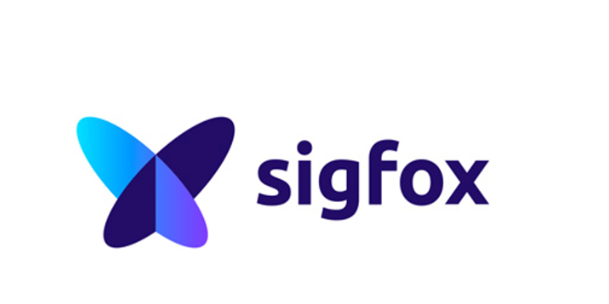
Sigfox originates from the French company Sigfox, which builds a wireless network using ultra-narrowband (UNB) technology. It is both a wireless technology and a network service.
Sigfox operates in the 868MHz and 902MHz ISM bands, consuming very narrow bandwidth or power.
Sigfox radio equipment uses a technology called ultra-narrowband (UNB) modulation, occasionally sending short messages at low data rates. The maximum message length is 12 bytes, and a node can send up to 140 messages per day. Due to the narrow bandwidth and short messages, in addition to its 162dB link budget, it can also achieve a long transmission distance of several kilometers. For burst applications that only need to send small, infrequent data, Sigfox is an excellent choice.
The disadvantages of Sigfox are that data sending back to sensors/devices (downlink capability) is severely limited, and signal interference can also become a problem.
HaLow Technology
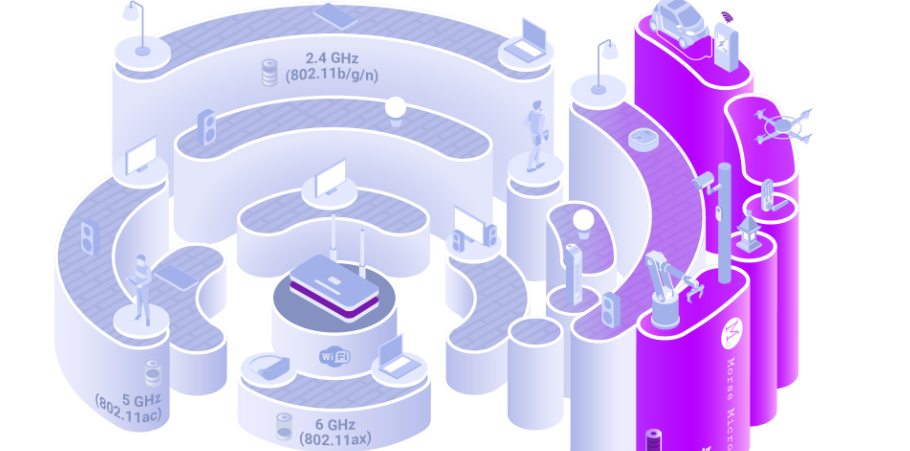 Unstable connections, low efficiency, and intermittent time slots have always been headache-inducing problems for WiFi technology.
Unstable connections, low efficiency, and intermittent time slots have always been headache-inducing problems for WiFi technology.
HaLow is a new version of WiFi suitable for industrial IoT applications, with the code name 802.11ah. It allows WiFi to be applied in more places, such as small-sized, battery-powered wearable devices, and is also suitable for deployment in industrial facilities and applications in between.
HaLow uses the 900MHz frequency band, lower than the current WiFi’s 2.4GHz and 5GHz bands, making it more suitable for small data loads and low-power devices. The United States uses the 902MHz to 928MHz unlicensed band, while other countries use similar bands below 1GHz. Although most WiFi devices can only achieve a maximum coverage range of 100m under ideal conditions, HaLow can reach up to 1km when using appropriate antennas,
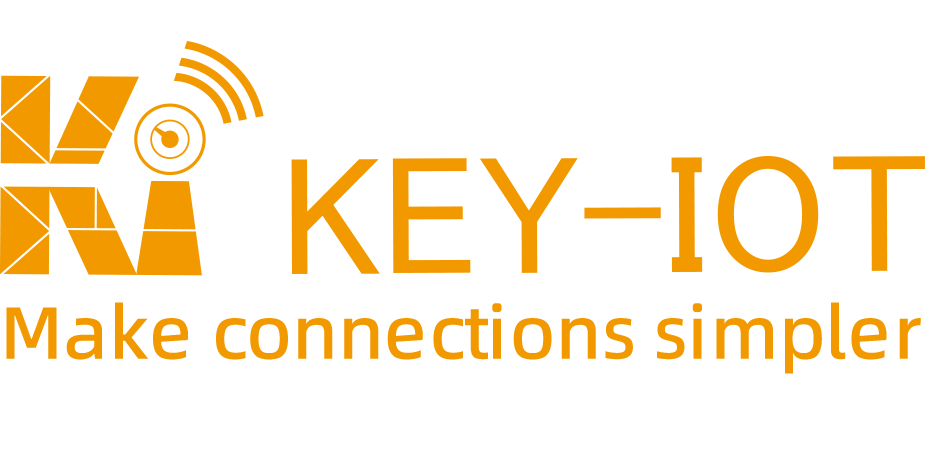 KEY-IOT
KEY-IOT

 ZigBee was officially proposed in 2003 to address the shortcomings of Bluetooth communication protocols, such as high complexity, high power consumption, short distance, and small network scale. The name is derived from bees, which use flight and “zigzag” wing vibrations to communicate the location of pollen to their peers, forming a communication network within the group.
ZigBee was officially proposed in 2003 to address the shortcomings of Bluetooth communication protocols, such as high complexity, high power consumption, short distance, and small network scale. The name is derived from bees, which use flight and “zigzag” wing vibrations to communicate the location of pollen to their peers, forming a communication network within the group.
 LoRa is a long-distance, low-power wireless transmission solution developed and promoted by Semtech Corporation in the United States. It is based on spread spectrum technology and provides users with a simple system that can achieve long-distance, long battery life, and large capacity, thus expanding sensor networks. Currently, LoRa mainly operates in the global free frequency band, with a working frequency of 915MHz in the United States, 868MHz in Europe, and 433MHz in Asia. Its typical range is 2km to 5km, with a maximum distance of 15km, depending on the location and antenna characteristics.
LoRa is a long-distance, low-power wireless transmission solution developed and promoted by Semtech Corporation in the United States. It is based on spread spectrum technology and provides users with a simple system that can achieve long-distance, long battery life, and large capacity, thus expanding sensor networks. Currently, LoRa mainly operates in the global free frequency band, with a working frequency of 915MHz in the United States, 868MHz in Europe, and 433MHz in Asia. Its typical range is 2km to 5km, with a maximum distance of 15km, depending on the location and antenna characteristics.

 Unstable connections, low efficiency, and intermittent time slots have always been headache-inducing problems for WiFi technology.
Unstable connections, low efficiency, and intermittent time slots have always been headache-inducing problems for WiFi technology.
